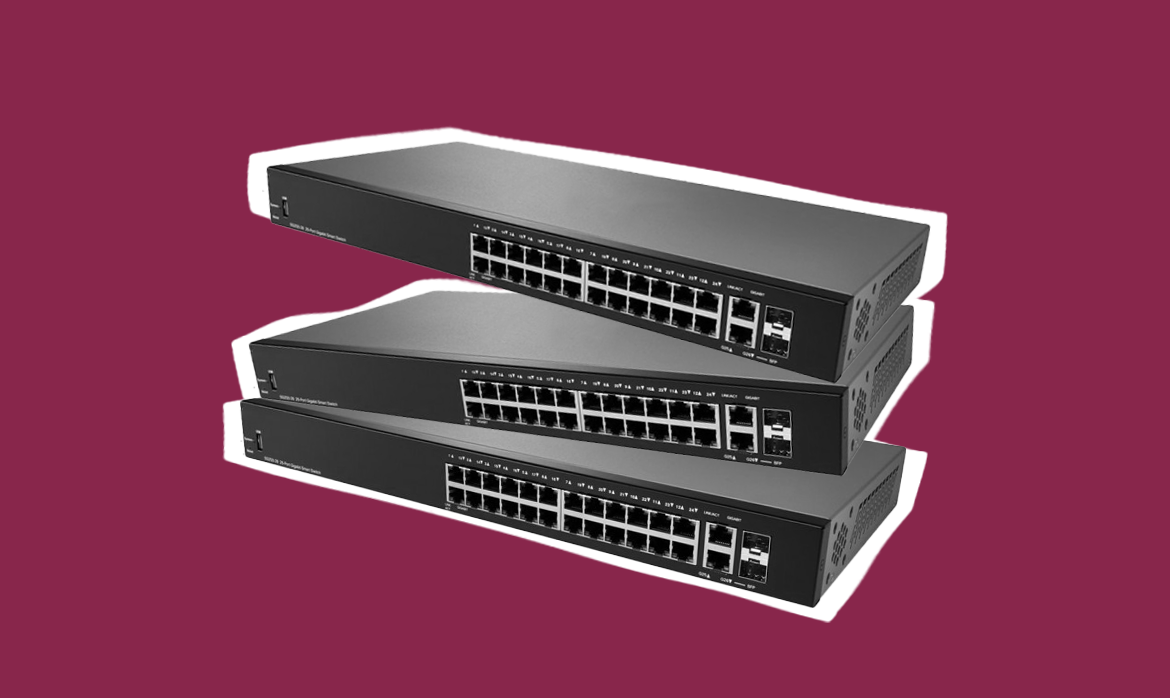In the world of modern business, a reliable and efficient network is the backbone of operations. Business switches, the unsung heroes of connectivity, play a crucial role in ensuring seamless communication, data transfer, and overall network performance. However, not all switches are created equal. In this article, we’ll delve into the four primary types of business switches: Managed, Managed POE, Unmanaged, and Unmanaged POE. By understanding the distinctions and benefits of each type, you’ll be better equipped to make informed decisions when optimizing your business network.
- Managed Switches
Managed switches are the powerhouses of network control, offering a high level of customization and configuration options. These switches provide network administrators with granular control over traffic, security, and performance optimization. Managed switches are particularly well-suited for businesses with complex network environments, allowing administrators to fine-tune settings to meet specific requirements.
Core Features of Managed Switches:
VLAN Configuration – Virtual LANs (VLANs) can be created to segment the network, improving security and performance.
Quality of Service (QoS) – Prioritize certain types of traffic, ensuring that critical applications receive sufficient bandwidth.
Port Mirroring – Monitor network traffic for troubleshooting, analysis, and security purposes.
Security Features – Managed switches offer features like Access Control Lists (ACLs) and port authentication to enhance network security.
- Managed POE Switches
Managed Power over Ethernet (POE) switches provide the benefits of managed switches while also delivering power to connected devices, such as IP phones, cameras, and access points. This integration of power and management simplifies installation and maintenance for devices that require both data and power connectivity.
Core Features of Managed POE Switches:
POE Support – Power devices over Ethernet cables, eliminating the need for separate power sources.
Centralized Management – Control both network configuration and device power allocation from a single interface.
Energy Efficiency – Managed POE switches often include power-saving features, reducing energy consumption.
- Unmanaged Switches
Unmanaged switches offer a straightforward solution for businesses seeking a plug-and-play networking option. These switches are pre-configured out of the box and require minimal setup. Unmanaged switches are ideal for small businesses or locations where basic connectivity is the primary requirement.
Core Features of Unmanaged Switches:
Ease of Use – Unmanaged switches require minimal setup and are suitable for businesses without specialized IT resources.
Affordability – These switches are often more cost-effective compared to managed switches.
Basic Connectivity – Unmanaged switches provide basic network connectivity without the need for extensive configuration.
- Unmanaged POE Switches
Similar to unmanaged switches, unmanaged POE switches provide a simple and hassle-free solution for businesses that require both power and connectivity. These switches are designed for straightforward deployment and are commonly used for devices like IP phones and cameras.
Core Features of Unmanaged POE Switches:
Plug-and-Play – Unmanaged POE switches offer easy setup and operation, making them suitable for businesses with minimal technical expertise.
Power Convenience – Power devices like IP phones and cameras over Ethernet cables without the need for separate power outlets.
Cost-Effective – Unmanaged POE switches provide a cost-effective solution for businesses seeking to power and connect devices simultaneously.
Selecting the right type of business switch is a critical decision that directly impacts the performance, efficiency, and scalability of your network. Managed switches offer robust customization and control, making them ideal for complex network environments. Managed POE switches combine power and management for efficient device connectivity. On the other hand, unmanaged switches and unmanaged POE switches provide simple plug-and-play solutions for basic connectivity and power needs.
When evaluating your business network requirements, consider factors such as network complexity, device connectivity, and available resources. By aligning your choice of business switch with your specific needs, you can build a reliable and resilient network infrastructure that supports your organization’s growth and success. Whether you opt for fine-tuned control or straightforward simplicity, the world of business switches offers a solution for every networking challenge.

